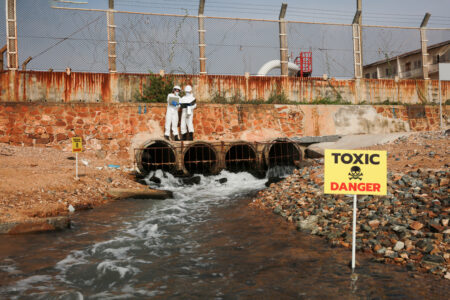
Share On Social!
Most Latinos and Americans spend the majority of their time inside of homes, offices, restaurants, movie theaters, and other buildings.
The indoor air quality in these spaces might not cross most people’s mind.
However, researchers say the air inside buildings can billow into a significant health concern because poor air quality can lead to numerous short- and long-term complications — headaches, dizziness, fatigue, respiratory diseases, Toxicant‐Induced Loss of Tolerance (TILT), and even cancer.
“It is important to be aware of your environment,” Dr. Claudia Miller, an environmental health professor and leader of the Hoffman TILT program at UT Health San Antonio, writes. “This is especially important for indoor air, as most people spend 90% of their time indoors.”
Indoor Air Pollutants
There are many ways harmful substances can get into the air supply in any given building.
Worse, they can be a mixture of various interior and exterior pollutants, according to Dr. Alessandra Cincinelli and Dr. Tania Martellini, who conducted studies on this subject at the University of Florence’s Department of Chemistry.
“Indoor Air Quality has a significant impact on health and quality of life in general,” the researchers state in their 2017 publication. “For many people, the health risks from exposure to indoor air pollution may be greater than those related to outdoor pollution. Indoor environments represent a mix of outdoor pollutants… as well as indoor contaminants, which originate inside the building.”

These substances can play a role in individuals developing TILT, a two-stage illness that is initiated by chemical, toxic exposures. Symptoms, which include gastrointestinal problems, migraines, and allergy-like issues, can be triggered by everyday items.
Numerous pollutants can impact air quality, according to the EPA, including:
Indoor sources:
- Mold
- Cleaning supplies
- Cooking appliances
- Paints
- Insecticides
- Volatile organic compounds
- Tobacco use
- Building materials are also potential sources
Outdoor sources:
- Gases (carbon monoxide, ozone, radon)
- Particulate matter (dust)
- Volatile chemicals in public water supplies
- Contaminated groundwater or soils
- Biological particles (bacteria, fungi, pollen)
- Harmful smoke from chimneys
One pollutant that has garnered national attention in recent years is mold.
Mold can cause significant health issues in those who are sensitive, according to Janie L. Harris, an extension housing and environment specialist at Texas A&M University.
“Most people have few difficulties when exposed to mold spores, but it is estimated that about 10% of the population is severely allergic to mold,” Harris said. “Symptoms include respiratory problems, nasal and sinus congestion, watery eyes, sore throat, coughing, and skin irritations. Mold also can trigger asthma attacks. In some cases, reactions are fatal.”
Solutions for Better Indoor Air Quality
The ways these substances can impact a building’s air quality, as well as its inhabitants, is a significant cause for concern. Indoor air quality is especially important for Latinos, who already tend to experience a higher level of outdoor air pollution than their peers.
Still, there are measures individuals, building managers, and construction workers can take to improve this issue.
“Proper ventilation is a good first step,” TILT’s Dr. Miller writes. “Also, minimize or eliminate scented products such as perfume, air fresheners, fragranced cleaning products, and scented candles. Also, keep in mind that not all harmful chemicals have an odor. Pesticides, for example, are among the most common and most toxic chemicals. Baits and traps are good alternatives to pesticide application.”
For future building development, the American Institute of Architects recommends a few steps in creating healthier structures:
- Implement 10-foot walk-off mats or entrance grilles oriented in the direction of travel to catch Contaminants tracked into buildings on occupants’ shoes
- Eliminate indoor combustion (gas ranges, boilers, fireplaces, water heaters) within the conditioned spaces whenever possible
- Use high-quality air filtration systems to eliminate airborne contaminants and provide dedicated outdoor air to keep indoor carbon dioxide to a minimum
While some of these strategies might seem extreme or costly to some, William Fisk, a mechanical engineer at the Lawrence Berkeley National Laboratory, said the benefits could far outweigh the overhead.
“Pay attention to the economic implication of improvements in health and work performance,” Fisk told the BBC. “They are large, compared to what it takes to improve buildings. If you can improve worker performance by just a few percents, that’s a lot of money… The potential for economic benefits should not be overlooked.”
Editor’s Note: This is Part Three of a series on building for holistic health. Read Part One and Part Two. This article is part of a collaboration between Salud America! and the Hoffman Toxicant-Induced Loss of Tolerance (TILT) program at UT Health- San Antonio. To find out if you are TILTed due to exposure to everyday foods, chemicals, or drugs, take a self-assessment or learn more about TILT.
By The Numbers
1
Quick Survey
Can help you find out how chemically sensitive you are



